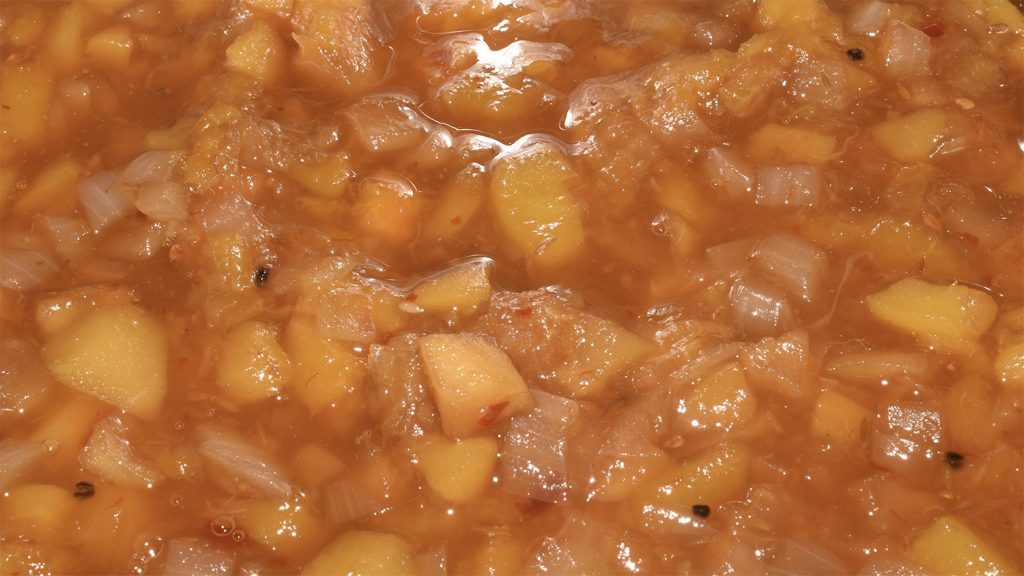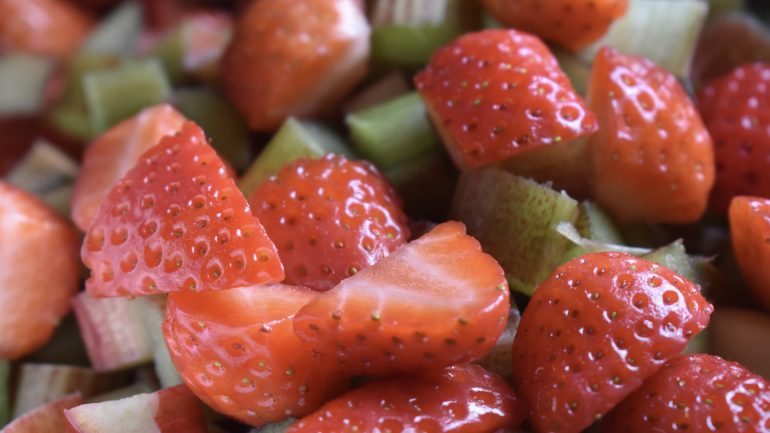Instead of doomscrolling on TikTok, start channelling Nara Smith in your own kitchen and chutney your way out of wilting veggies
DITCH wants to ditch the food waste. No one likes throwing away food, including our anti-consumerism mag. What a shocker.
Food waste is an insane problem in today’s world. Waste Managed stats show the UK alone chucks out around 9.52 million tonnes of food annually, enough to feed upwards of 30 million people. Despite this, 8.4 million live in food poverty in the UK. The average household puts £470 worth of food in the bin every year, so much of which can be avoided when you whack it into a chutney.
Aside from reducing food waste and doing your bit for the planet, there’s still plenty in it for you – you’ll be saving money. You’ll be doing something creative and calming, away from the digital world. Plus, who doesn’t like impressing their friends and family with something homemade?
How to start chutney-ing
To kick things off, go to your kitchen and have a look at what is about to over-ripen or start wilting and then ask:
- Is it a fruit or a vegetable? If yes, keep going, if no, give it a miss this time.
- Is it very starchy like a potato, have a very high water content or holds very little structure like a leafy green? If no, keep going, if yes, it’s probably a no for chutney-ing.
- Is it something that will hold its shape while cooking? (avoid things like avocado, or melon, or things like this that just disintegrate or go completely mushy). If it’s not going to go to mush, you are ready to start making chutney, but if it will, maybe try a different ingredient.
Once you’ve established it can be chutney-ed, here are the basic ingredients you’ll need to revamp your food
For most chutneys, these are the basic ingredients:
- Base: Fruits or vegetables
- Vinegar
- Sugar
- Spices: Cumin, mustard seeds, chilli powders, turmeric – anything you like.
Tips for sugar and vinegar
The most commonly used vinegars are cider vinegar, white wine vinegar, or sometimes malt vinegar. This is entirely your preference, but cider vinegar is most people’s go-to as it has a milder taste. Just ensure your vinegar is at least 5% acetic acid.
Sugar is also a personal preference. Brown gives the chutney a richer, more molasses-style flavour, whereas white sugar has a lighter taste.

How to make it
A fairly standard recipe is 2kg of fruit or vegetables combined with 500ml vinegar and 250-350g of sugar, but this can be worked out as a ratio for whatever amount you have e.g. 1kg of fruit and veg would need 250ml of vinegar and 125g-175g of sugar.
Start by dicing your base ingredients and add to a large pan. A maslin pan is traditionally used (if you want to chutney-fy things like a true professional), but a deep saucepan also works. As it starts cooking down, add your vinegar and sugar and mix it on higher heat. Once bubbling, turn down the heat and mix it every few minutes to prevent burning on the pan. Add in your chosen spices and let it simmer until the veg or fruit has cooked down.
You can taste the chutney near the end of its cooking to check. If it’s very acidic from the vinegar, don’t stress. It just needs time to mature, mellow out and balance its flavours.
Next up is sterilising your jars:
- Preheat the oven to 180°C. Wash jars and lids in hot, soapy water, rinse thoroughly, and space them out on a baking tray. Put them in the oven once it reaches temperature for at least 10 minutes.
- Place lids and the ladle in boiling water for 10 minutes.
- When ready to fill, remove jars and let them cool slightly to prevent shattering. Leave a quarter-inch gap when filling, and use a sterilised metal skewer to remove air bubbles.
- Shake excess water from lids- but don’t dry them, put them on the jars, and tighten. Once completely cool, tighten lids again as they may loosen.
Put it into the fridge where it should keep as tasty chutney for weeks to come.

